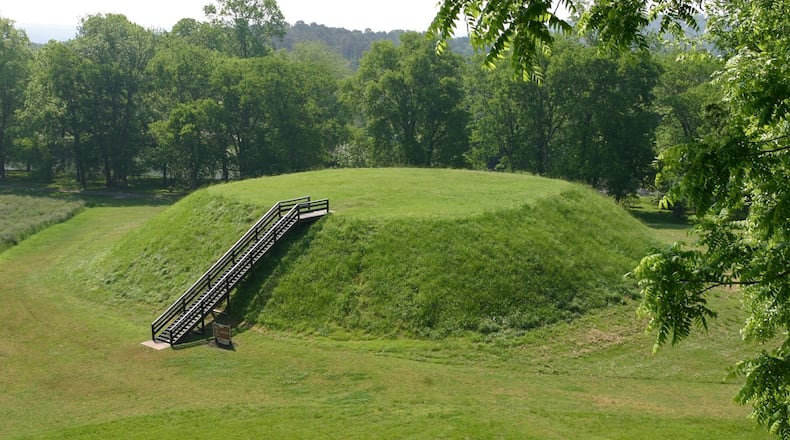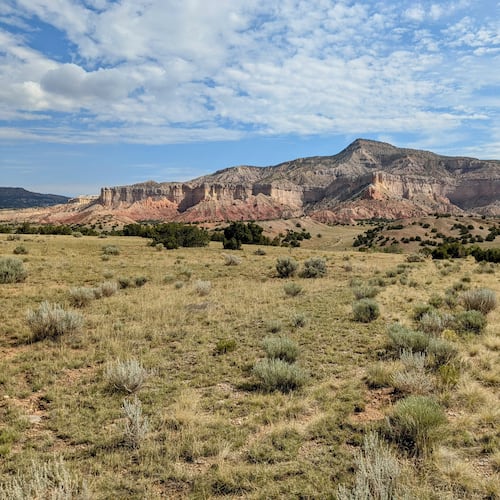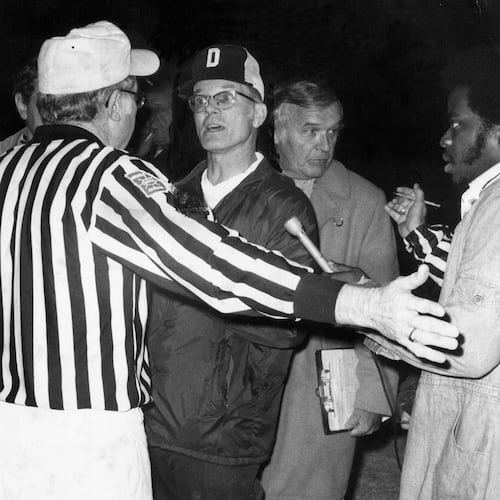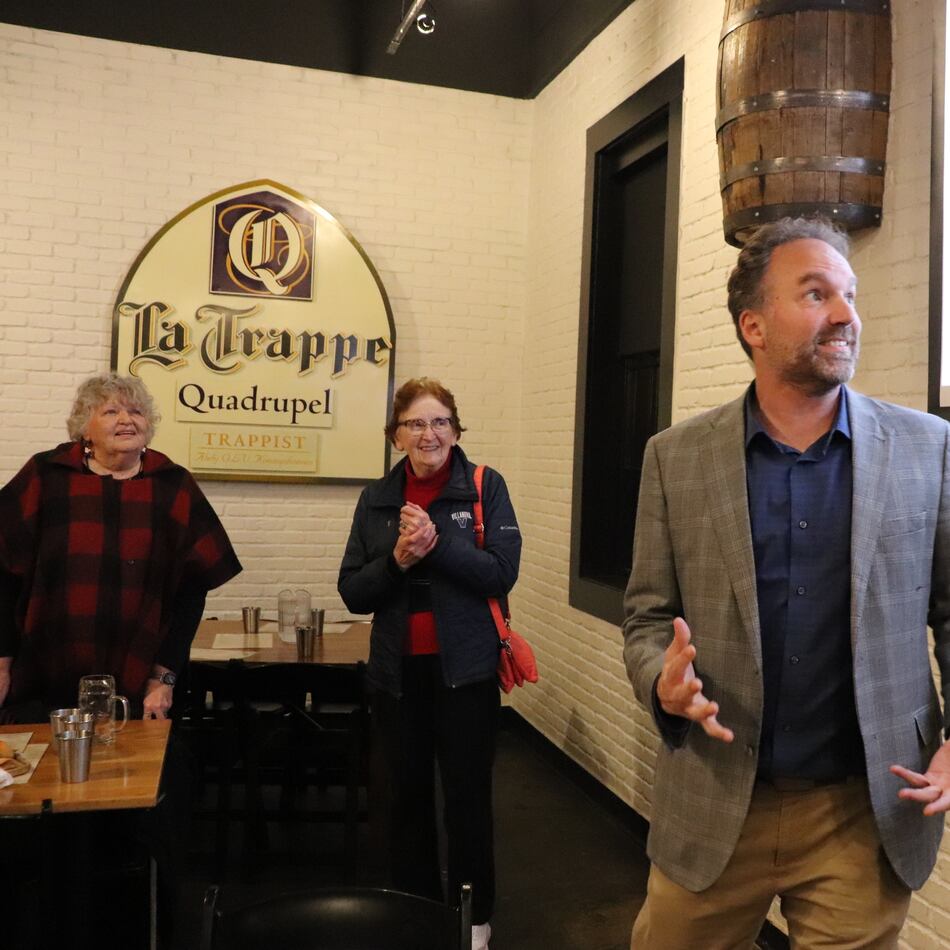Cartersville — Valarie Ikhwan gathered with some colleagues inside the nearly empty museum at the Etowah Indian Mounds earlier this year, inspecting some animal pelts intended for a new hands-on display, including fake furs representing protected species.
Ikhwan works for the Georgia’s Natural Resources Department, which is finishing a $90,000 overhaul of the space. The work began this year after DNR removed from display the jewelry, marble human figures and many other artifacts excavated from the former settlement.
They are among 187,060 funeral-related objects being returned — along with at least 404 sets of Native American remains — to the Muscogee (Creek) Nation, federal records show. Also on the list are stone axes, copper headdresses and tortoise shell batons.
DNR has already replaced the museum’s flooring, ceiling and lighting and hopes to finish transforming the space into a new learning center by Jan. 1. New fabric panels will describe the former settlement’s history and culture. Another hands-on display will allow visitors to weave historic patterns with a loom.
DNR is working closely with the Muscogee (Creek) Nation to ensure historical accuracy and sensitivity, said Ikhwan, the agency’s chief interpreter. Now based in Oklahoma, the nation has connected DNR with Native American artists skilled at making reproductions.
“We want to be culturally sensitive. When the archaeology was done in the 1950s and 1960s, it was done without any permission of tribal affiliates,” Ikhwan said. “So we are trying to heal some of those wounds.”
Credit: Jeremy Redmon
Credit: Jeremy Redmon
Nationwide, museums and other institutions are returning artifacts and human remains as part of the Native American Graves Protection and Repatriation Act, a federal law enacted in 1990. That law came 160 years after President Andrew Jackson signed the Indian Removal Act, prompting the U.S. government to forcibly remove Native Americans from their lands in the South. Among them were descendants of people who lived at the Etowah Mounds.
There is still a lot of work left to be done. As of September of 2022, 108,328 sets of human remains were still in collections across the country, according to a report released by the U.S. Interior Department. Of those, 1,042 were removed from sites in Georgia. The University of California at Berkeley had the largest collection at 9,062.
Thirteen U.S. senators wrote Berkeley a letter in April, calling the slow pace of repatriating the remains “unacceptable, adding: “Delayed repatriation is delayed justice for Native peoples.”
Berkeley responded, saying in part: “We have apologized directly to tribal representatives, and we are currently engaged in a broad range of efforts to expedite the repatriation process and improve the campus’s relationship with tribal nations.”
In 2009, Georgia’s DNR published in the Federal Register a notice, saying it had completed an inventory of the items removed from the Etowah Mounds. In August, the National Park Service announced it had awarded DNR a $94,914 federal grant to help Georgia with the repatriation process. That process, which could take months and conclude with a reburial of the human remains and objects, is complicated because other institutions are holding items removed from Etowah, said Rachel Black, Georgia’s state archeologist.
“We are working with the Muscogee Nation on that grant to make sure the inventory is as accurate as possible and to prepare those ancestors for eventual reburial by reuniting them with their funerary items,” Black said.
Emman Spain, the Muscogee (Creek) Nation’s NAGPRA coordinator, told The Atlanta Journal-Constitution in March about his tribe’s plans.
“One of the things our tribe wants to do is get all the information and repatriate all of the items and do a reburial at once to bury everyone together,” Spain said.
Dating to 1000 A.D., Etowah grew from a modest village into a fortified regional capital, ultimately serving as a home to several thousand Native Americans, according to the site’s historic guide. The six flat-topped earthen mounds there served as homes for leaders and for burying and commemorating the dead.
Researchers have found two borrow pits and a dry moat formed by the removal of soil used to build the mounds. They have also identified an area next to the tallest mound that served as a plaza, where people played a game from which lacrosse originated. There is also evidence, according to experts, that Spanish explorers visited Etowah in the 16th century.
Operated by DNR and open to the public, the site has welcomed more than 24,000 visitors over the last 12 months, said Keith Bailey, a DNR curator and preservationist.
“We had somebody who was from Czechoslovakia last week. We have people from all over the world,” he said.
Adam King, an archeologist who has done extensive research at the site, supports the repatriation process and is planning to team up with the Muscogee (Creek) Nation and coauthor a new piece about Etowah’s history. He has already published an authoritative book about it, “Etowah: The Political History of a Chiefdom Capital.”
“That whole place is a sacred space where ancestors are buried and sacred things happened,” said King, who directs the South Carolina Institute for Archeology and Anthropology. “That is a space that deserves to be preserved.”
What Was Taken from the Etowah Indian Mounds
A number of organizations have items from the historic site in North Georgia. Some are repatriating them to the Muscogee (Creek) Nation under a 1990 federal law called the Native American Graves Protection and Repatriation Act, or NAGPRA.
- Working closely with the Georgia Department of Natural Resources, the University of West Georgia is caring for about 760 archival boxes of human remains and funeral-related objects, including a pair of marble human figures, that were taken from the site and that will be repatriated under NAGPRA.
- The University of Georgia is curating objects excavated from the Etowah on DNR’s behalf.
- The National Museum of Natural History in Washington is reviewing the human remains and many objects it has from Etowah and will be assigning a repatriation case to an incoming tribal liaison the museum has hired.
- The Field Museum in Chicago published a notice in the Federal Register on Aug. 3, saying it had at least two sets of human remains and some shell beads and a ceramic pot taken from Etowah and possibly near the site. The museum said it had “recently repatriated all known items removed from Etowah Mounds, and while they have not yet been physically returned, we are working with the appropriate tribe to facilitate the return.”
- Emory University’s Michael C. Carlos Museum has in storage more than 1,000 items that were excavated from and near Etowah in the 1920s, including pottery, flints and beads. The museum has completed “Transfer of Control” documentation with the Muscogee for some items and is continuing consultations with the tribe about repatriating the rest.
- Yale University’s Peabody Museum says it has ceramic sherds in its collection from Etowah that “do not currently have NAGPRA status, as there is no evidence they were funerary or sacred.” The museum added it is “happy to consult with local indigenous communities to determine if that status should be applied, at which point repatriation via NAGPRA could be undertaken.”
About the Author
Keep Reading
The Latest
Featured





